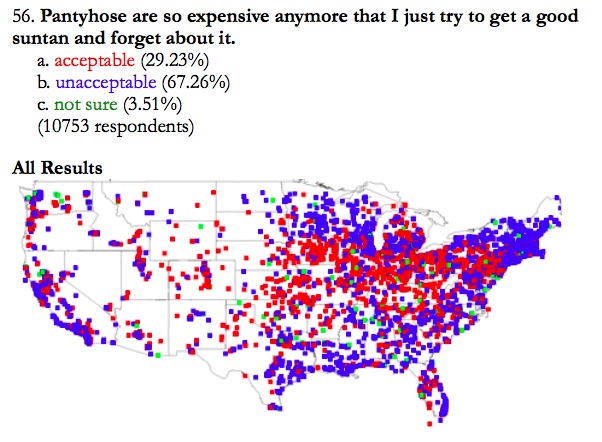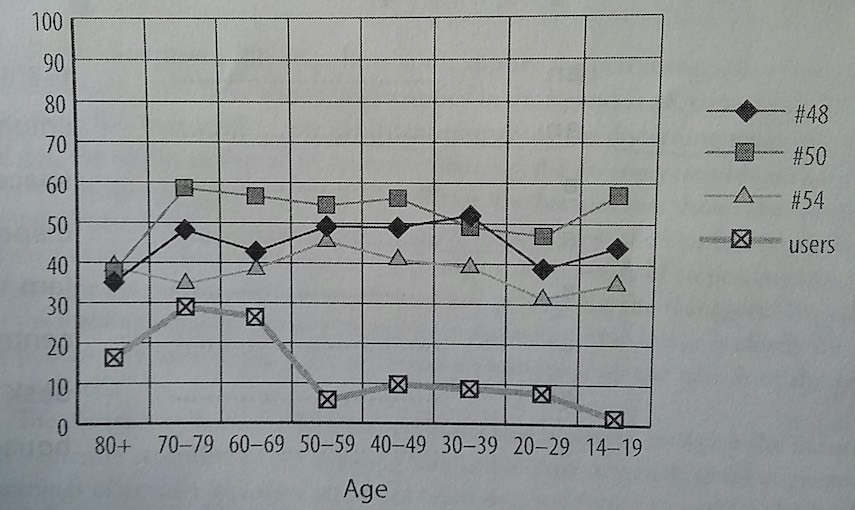Quick links
anymore
DCHP-2 (Nov 2015)
Spelling variants:any more
adv. — dated, near obsolete, especially Ontario
nowadays.
Type: 2. Preservation — In standard English, anymore is used only in negative constructions: "We don't like him anymore", or "They never come here anymore". However, in some speech communities, "positive anymore" is possible, where anymore means 'nowadays': "We see a lot of deer around here anymore".
This is a preservation in conservative Canadian English from the first wave of settlement, after the American Revolution, that peopled what would become Ontario, Quebec and the Maritimes. The construction was spotted early (e.g. Eitner 1949) in US English, with Chambers (2007) writing the definitive account on the construction in Canadian English. According to Chambers (2007: section 3) it is "the last incontrovertible remnant of the old historical tie between the Golden Horseshoe and Pennsylvania, the original home of so many of the Loyalists".
The construction is increasingly rare and recessive in Canada today (see the spoken 2003 and 2006 quotes, as not one occurrence was found in written Canadian English), though quite alive in parts of the US Midwest (e.g. rural Illinois around Urbana-Champaign or Grand Rapids, Michigan, see fist note). As Image 1 shows from Vaux (2004), positive anymore is deemed acceptable (red dots) in the entire Midwest and emanates to some scattered points beyond it today.
Among 137 forms in the Bank of Canadian English (BCE 2006-2016) not one qualifies as a positive anymore construction. The semantics of the construction are subtle and are best explored, in the light of scarce corpus evidence, with written questionnaires (e.g. Dollinger 2015b). Chambers (2007: Figure 1) offers the best Canadian data for three variable contexts, which is reproduced in Image 2 for respondents from the Golden Horseshoe, from about Oshawa in the east, along Lake Ontario to St. Catharines, including Toronto.
Image 2 shows the correct interpretations of three positive anymore sentences (see the second fist note) and marked as "users" the self-confessed users of positive anymore. While the teenagers to the 70-year-olds recognize the construction fairly consistently in the 50%-area, the self-confessed users drop off in the 50-year-olds and are virtually nil in the teenagers. Apparently, positive anymore fell off in use starting in the 1950s, when the Golden Horseshoe became ethnically highly diverse and "the Anglo-Celtic hegemony that had been the result of the great Victorian immigrations of the previous century" wore off (Chambers 2007: section 5).
While in Canada today the construction is a "linguistic fossil" (Chambers 2007), in the US, Hindle (1975) (qtd. in Chambers 2007: Map 2) identified the construction's core area in Wisconsin, Illinois, Kentucky, West Virginia and parts of Pennsylvania, with a secondary area all over the US Midwest.
The construction is increasingly rare and recessive in Canada today (see the spoken 2003 and 2006 quotes, as not one occurrence was found in written Canadian English), though quite alive in parts of the US Midwest (e.g. rural Illinois around Urbana-Champaign or Grand Rapids, Michigan, see fist note). As Image 1 shows from Vaux (2004), positive anymore is deemed acceptable (red dots) in the entire Midwest and emanates to some scattered points beyond it today.
Among 137 forms in the Bank of Canadian English (BCE 2006-2016) not one qualifies as a positive anymore construction. The semantics of the construction are subtle and are best explored, in the light of scarce corpus evidence, with written questionnaires (e.g. Dollinger 2015b). Chambers (2007: Figure 1) offers the best Canadian data for three variable contexts, which is reproduced in Image 2 for respondents from the Golden Horseshoe, from about Oshawa in the east, along Lake Ontario to St. Catharines, including Toronto.
Image 2 shows the correct interpretations of three positive anymore sentences (see the second fist note) and marked as "users" the self-confessed users of positive anymore. While the teenagers to the 70-year-olds recognize the construction fairly consistently in the 50%-area, the self-confessed users drop off in the 50-year-olds and are virtually nil in the teenagers. Apparently, positive anymore fell off in use starting in the 1950s, when the Golden Horseshoe became ethnically highly diverse and "the Anglo-Celtic hegemony that had been the result of the great Victorian immigrations of the previous century" wore off (Chambers 2007: section 5).
While in Canada today the construction is a "linguistic fossil" (Chambers 2007), in the US, Hindle (1975) (qtd. in Chambers 2007: Map 2) identified the construction's core area in Wisconsin, Illinois, Kentucky, West Virginia and parts of Pennsylvania, with a secondary area all over the US Midwest.
From the digital file of the editor-in-chief. Chatroom talk with Michele, born 1957, from Grand Rapids, Michigan, 10 Aug. 2009:
SD: "... and now ready to drive back to beautiful bc. cheers, to our friends from america." [sic] Michele: "Wahoo. traveling just seems like such a chore to me anymore!! must be getting oldish."
SD: "... and now ready to drive back to beautiful bc. cheers, to our friends from america." [sic] Michele: "Wahoo. traveling just seems like such a chore to me anymore!! must be getting oldish."
The sentences presented to respondents in Chambers (2007) are as follows (see Image 1 for responses):
48. Someone said, John smokes a lot any more.
50. What does any more mean in John smokes a lot any more?
51. Whether the respondent "might say [e.g. #54] under the right circumstances?"
54. Harry likes rock music any more.
For the full set of questions, see the Dialect Topography questionnaire.
48. Someone said, John smokes a lot any more.
50. What does any more mean in John smokes a lot any more?
51. Whether the respondent "might say [e.g. #54] under the right circumstances?"
54. Harry likes rock music any more.
For the full set of questions, see the Dialect Topography questionnaire.
Quotations
2003
I get a lot of junk mail any more.
2006
You get a lot of funnel cakes at fairs and exhibitions anymore.
References
- Chambers (2007)
- Eitner (1949)
- Dollinger (2015b)
- Dialect Topopgraphy • Questionnaire (use question numbers from the second fist note)
- Vaux (2004) • Harvard Dialect Survey: anymore
Images

Image 1: Results from Vaux (2004) for positive anymore in the US.
